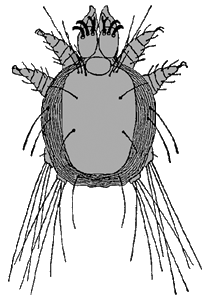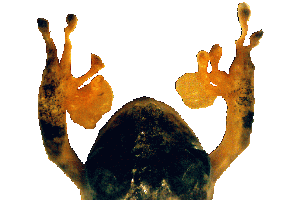Infectious Disease Ecology
Table of contents:
The Infectious Disease Ecology & Microbiological Conservation Medicine & Biology (IDE&MCM) are both very young disciplines, which so far have not settled in an uncontroversial way their conceptual nucleus, nor have they defined their boundaries to other disciplines, nor have they given themselves a true German name. But, the catchphrases used within the names may be defined like this:
Infectious Disease Ecology: The lore of the host-pathogen interactions within the context of their environment and evolution.
Microbiology: The lore of life of organisms which are too small to be seen with the naked eye.
Conservation: protective management of habitats, biotopes, and ecotopes.
Medicine: nonsurgical health improving or preservation in man.
They undoubtedly include the following fields of basic research:
Research in Conservation Biology = Field of research that deals with the analysis of global biological diversity, as well as their decline with the threat of biological taxa and the development of meaningful conservation and protection measures.
Research in Conservation Medicine = Field of research that deals with the medical and veterinary medical aspects of Conservation Biology.
Research in Infectious Disease Ecology = Field of research that deals with the understanding of the spatial and temporal patterns of transmission of infectious microorganisms and their effect on host populations.
W3.1 Infectious Disease Ecology & Microbiological Conservation Medicine (IDE&MCM)
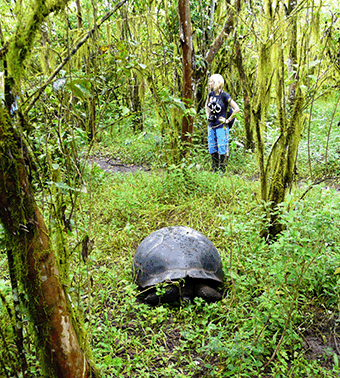
Fig. 1: This illustration demonstrates the show of a "successful" protection of Galapagos tortoises on Santa Cruz Island/Galapogos, in which giant tortoises of different origin and subspecies are crammed in a confined space of a secondary forest of allochthonous guava trees in a comfortable way for tourists, but brainless in biology and hygiene, and didactically dishonourable to intentional fraudulent.
© I. Hassl.
The Infectious Disease Ecology, in this context mostly limited to an Ecology of Parasitic Infections, and the Microbiological Conservation Medicine are two currently rapidly emerging, interdisciplinary research fields with a broad overlap. Within the overlap lay studies of the relationship between human and animal health concerning infectious diseases, the impact of extinction of biotaxa, and the environmental and social conditions of conservation. The overlap is in part also known as ecological medicine, environmental medicine, medical geology and environmental protection biology. It may also be defined as that branch of science which deals with the study of comparative human and animal health within basically shifting environmental conditions. The relevant environment shifts appreciably from a natural state to an artificial, man-made lifeworld. Within this cyber-environment the impact of the loss of biodiversity to man shall be minimised or even transformed into a profit, eg by eradication of infectious microorganisms. The Conservation Medicine and the Biology Impact Assessment incorporates all legal, political and social implications on the Infectious Disease Ecology & Conservation Biology.
The part of the IDE&MCM I am interested in concerns itself with the adaptation by evolution of health associated microorganisms to a man-made environment and their effects on humans within the scope of hygiene, medicine, veterinary medicine and microbiology. It addresses in an integrative approach health problems caused by microorganisms derived from man-made environmental changes. These approaches include methodically:
1. identifying critical factors in the manifestation of infectious microorganisms. Usually these are pathogens of so called "emerging diseases", in our case restricted to parasites because of reasons of competence.
2. monitoring the infectious status of man and associated animals.
3. on demand a crisis intervention, eg by vaccination, screening survey and hygienic measurements.
4. the support of development and application of newest health technologies.
5. welfare concerns of an animal keeping society.
6. recognition and description of the evolutionary effective selection mechanisms.
7. intra- and extramural teaching and public relation.
W3.2 Ambition and proceedings of the IDE&MCM
The purpose
The ultimate goals of IDE&MCM are:
Primarily a risk analysis, that allows us to predict a future emergence or an increase in pathogenicity of known or nowadays unknown pathogens, as long as these pathogens are associated with the care taking and keeping of animals associated to man, and changes are related to evolutionary effective environmental changes.
Secondly, long-ranging, a sophisticated ex-situ-conservation management for endangered parasites. In 2014 for the first time, it was suggested in the scientific literature that parasites contribute to biodiversity and are therefore to be protected from extinction. The occasion was the realization that a whole range of avian chewing lice had died out together with their host animals, rare or even extinct birds, and one species, the condor chewing louse Colpocephalum californici Price et Beer 1963 has been deliberately exterminated by man in the course of an exaggerated condor protection program (cit. Mey 2005). The status "endangered species" was attributed to an ixodid tick, Amblyomma geochelone Durden, Keirans et Smith 2002, which pasitises only on the rare Madagascan Serrated tortoise Astrochelys yniphora (Vaillant 1885). Probably for reasons of nonchalance the mono- or oligophagic ticks of the Galapagos giant tortoises were not included into the "Red Lists" - although some taxa currently certainly get extinct together with their host taxa.
However, the requirement of a species conservation program for parasites is ethically highly problematic as the life of a parasite is still inextricably linked to suffering and in some cases the disease of its host. Only parasites that can be propagated in vitro may be placed in a preservation program without hesitation. In dept-thinking shows however, that this is not a good solution to the problem: Because - after a few generations those species lose their characteristics as parasites, they become undignified zoo animals without any prospect of release in a natural habitat ancestral to them. The parasite is no longer a parasite, but a heteronomous object of a conscience soothing conservation show like the tortoise in illustration 1.
Fig. 2: The closest relative of the bubonic mite: A female of Harpyrynchus longipilus Banks, 1904.
Parasites of humans have so far not been eradicated intentionally, the Guinea worm, Dracunculus medinensis Linnaeus 1758, applies unofficially as threatened with extinction. However, it is still under medical eradication, the existence of a conservation program with non-human host animals has not been disclosed. The extinction of this parasite will be an unspeakable cultural and medical historical loss, an in-vivo but ex-situ conservation of this species with the help of non-human hosts is possible and necessary for humanity in my opinion.
Shrouded in mystery is the case of bubonic mite Harpyrynchus tabescentium (Berthold, 1845). In a detailed opus Oudemans described 1939 the clinical picture and the history behind this obviously human-pathogenic, parasitic mite from the group of pseudoscabies pathogens. Unlike the currently known mite species pathogenic for man this 0.75 mm large mite is said to have been living socially in relatives´ associations and in the deep tissue below the dermis, between the skin and muscles, where they induced the formation of lentil-sized - allegedly even hen egg-sized - cysts plumped with (young) mites. Severe, sometimes even fatal diseases were only reported from Europe, they were especially common in Southeast Europe. A pathogenic mite causing such a disease in man is not known today. The bubonic mite has been described so inadequate that until today there is no exact picture and nobody can find a preparation. The most violent opponent of the postulate of a zoonotic pathogen causing a pseudoscabies was the Viennese dermatologist Ferdinand Ritter von Hebra, who thereby considered his scientifically correct diagnosis of a parasitic origin of human scabies as susceptible to falsification.
Some principle
The IDE&MCM deal with the infectious contact zones during the behaviour and as an effect of co-living of the following four entities: humans, animals held in captivity or otherwise associated to man, food, as far as it functions as a vector of infectious entities, and the ecotope.
If one defines the entities more exactly, then it follows that:
1. Humans in the sense of the IDE&MCM are usually civic inhabitants of municipalities in industrial nations.
2. Animals are those heterotrophic macro-organisms, usually from the class of the vertebrates, which live in association with man, frequently they act as food, leisure objects or partner substitute.
3. Food is any substance, which is metabolized by an organism for the purpose of the power production and cell construction, among it there are drinking and soaking water, organic food and fodder. In our context the food serves mainly as a vector of microorganisms, in cases of living fodder it is part of the microorganism pool.
4. The ecotope is the spatial distribution of the inanimate components of an ecological system, which is outlined by an infectious defined biocoenosis.
As a multidiscipline approach the IDE&MCM contain the following sub-disciplines within the contact zone:
I. Animal - humans - microbe: zoonosis & anthroponosis.
II. Food - humans - microbe: food- & water-transmitted infections.
III. Fodder - animal - microbe: fodder-transmitted infections.
IV. Environment - humans - microbe: infectious geonosis & sapronosis.
V. Environment - animal - microbe: Hygiene in animal husbandry and veterinary microbiology.
W3.3 History of the Conservation Medicine
The term "Conservation Medicine" was first used in the mid-1990s, and it represents a significant paradigm shift in both medicine and environmentalism. The last three decades have seen an alarming number of high-profile outbreaks of so called emerging viruses, emerging zoonosis and other infectious diseases. Many of them emerged from animals once living in the wilderness. They skipped on man because of closer contact caused by civilization between people, who live mostly in cities, and their leisure and companion animals which are kept in clusters and are co-housed improperly.
W3.4 Own basic approach
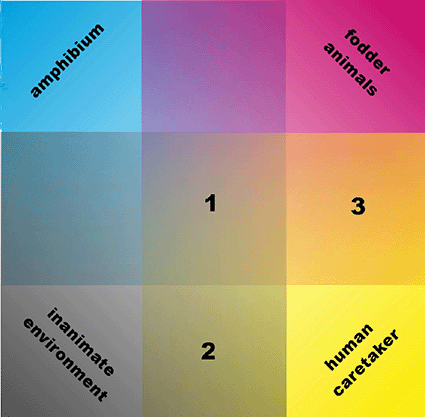
Left hand sided an illustration (fig. 3), which, as a paradigma, demonstrates the research-hot spots in the IDE&MCM by means of a study of the sources of infectious microorganisms during the aquatic keeping of pet amphibians (cit. Hassl 2007). The contact areas between the given circumstances are the spots where evolutionary adaptation of micro-organisms happens.
Contact areas relevant to hygiene are the following:
1 . . mutual contact zone, pool of microorganisms
2 . . biofilms, and
3 . . subsequent zoonosis area.
An example uprising from my own studies
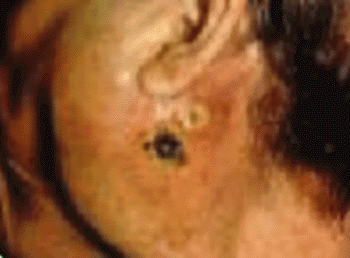
Fig. 4: A Weeksella virosa-infection of man.
Both images demonstrate two exemples for the above mentioned point 1, the mutual contact zone. They demonstrate the impact of an infection of man, Homo sapiens, and of an Emerald eyed treefrog, Hyla crepitans, with the opportunistic Gammaproteobacteria Weeksella virosa living in anthropogenic polluted water. Following two citations are given: "These bacteria become virulent and may cause pneumonia, meningitis, peritonitis, purulent inflammation foci, and sepsis in man as well as in other vertebrates, even in cold-blooded ones like this otherwise adspectoric healthy appearing amphibium." (cit. Hassl et al. 2002 & Hassl 2007).
Fig. 5: A Weeksella virosa infection in an Emerald eyed treefrog. © A. Hassl.
"A specimen of the tree frog Hyla crepitans Wied-Neuwied, 1824 collected in Venezuela exhibited epidermal cysts of about 5 mm diameter on the first (innermost) digit of each foreleg. Microbiological examination of the cyst contents demonstrated one type of microorganisms only, the bacterium Weeksella virosa Holmes et al., 1987. These aerobic, gram negative, Pseudomonas-related rods are ubiquitous soil and water inhabiting bacteria which are known to be opportunistically infectious to immunosuppressed or traumatised vertebrates in which they lead to sepsis. Weeksella is apparently able to colonise cysts and, probably, to form necrotic foci in the epithelium of otherwise apparently healthy anurans." (cit. Hassl et al. 2002).
W3.5 My adequate publications
- A000 Hassl A [1980]: ARBO–Viren in Vögeln. BFB–Bericht 37: 65.
- A002 Hassl A, Aspöck H [1982]: Untersuchungen über die Möglichkeit der Einschleppung von durch Zecken übertragenen Arboviren durch Vögel nach Mitteleuropa. Mitt Österr Ges Tropenmed Parasitol 4: 99–102.
- A002 Hassl A, Aspöck H [1982]: Untersuchungen über die Möglichkeit der Einschleppung von durch Zecken übertragenen Arboviren durch Vögel nach Mitteleuropa. Mitt Österr Ges Tropenmed Parasitol 4: 99–102.
- A003 Hassl A, Aspöck H [1982]: Untersuchungen über die Möglichkeit der Einschleppung von durch Zecken übertragenen Arboviren durch Vögel nach Mitteleuropa. BFB–Bericht 43: 157–63.
- A009 Edelhofer R, Auer H, Hassl A, Heppe E, Picher O, Aspöck H [1984]: Trichinella spiralis bei Wildschweinen in Österreich. Mitt Österr Ges Tropenmed Parasitol 6: 77–80.
- A033 Hassl A, Hassl D [1988]: Von Amphibien und Reptilien auf den Menschen übertragbare Parasitosen. Herpetozoa 1(1/2): 47–53.
- A045 Edelhofer R, Heppe–Winger E–M, Hassl A, Aspöck H [1989]: Toxoplasma–Infektionen bei jagdbaren Wildtieren in Österreich. Mitt Österr Ges Tropenmed Parasitol 11: 119–123.
- A137 Hassl A [1998]: Krankheiten und Krankheitsabwehr. In: Hofrichter R (Hsg.): Amphibien. Naturbuch Verlag; Augsburg:108–110.
- A174 Hassl A [2000]: Diseases and Defense Mechanisms. In: R. Hofrichter (edt): Amphibians: The world of frogs, toads, salamanders and newts. Firefly Books Ltd; Westport, CT : 108–110.
- Hassl A [2000]: Diseases and Immunology. In: R. Hofrichter (edt): The Encyclopedia of Amphibians: Evolution, Anatomy and Physiology. Key Porter Books; Toronto, CA : 108–110.
- A182 Hassl A, Pfleger S, Benyr G [2001]: Salmonellen–Infestationen in Amphibien und Reptilien. Mitt Österr Ges Tropenmed Parasitol 23: 39–42.
- A184 Hassl A, Url A, Rebel–Bauder B [2002]: Weeksella virosa Holmes et al., 1987 colonised epidermal cysts in Hyla crepitans Wied–Neuwied, 1824 (Anura: Hylidae). Herpetozoa 14(3/4): 127–131.
- A193 Pfleger S, Benyr G, Sommer R, Hassl A [2003]: Pattern of Salmonella Excretion in Amphibians and Reptiles in a Vivarium. Int J Hyg Environ Health 206: 53–59.
- A198 Hassl A [2003]: Ectoparasite of lizards and possible vector: the mammal hard tick Haemaphysalis concinna Koch, 1844. Herpetozoa 16 (1/2): 86–88.
- A199 Hassl A [2003]: Die Zecke der mediterranen Testudo–Arten. ÖGH–Aktuell 12: 12.
- A200 Hassl A, Benyr G [2003]: Hygienic evaluation of terraria inhabitated by amphibians and reptiles: cryptosporidia, free–living amebas, salmonella. Wiener Klinische Wochenschrift 115 (suppl 3): 68–71.
- A205 Hassl A [2004]: Microbiological Conservation Medicine and Exotic Pets. Wiener Klinische Wochenschrift 116 (suppl 4): 53–57.
- A208 Hassl A [2004]: Eine Glosse zum „Neuen Tierschutzgesetz in Österreich”. elaphe 12: 25–27.
- A249 Hassl A, Richter B, Kübber–Heiß A [2010]: Captive Snake' Care as Parasite's Life Cycle Conservation Program. Herpetozoa 23 (1/2): 83–85.
- A249 Hassl A, Richter B, Kübber–Heiß A [2010]: Captive Snake' Care as Parasite's Life Cycle Conservation Program. Herpetozoa 23 (1/2): 83–85.
- A253 Hassl A [2010]: A case of a facultative life–cycle diversification in the fluke Pleurogenoides sp. (Lecithodendriidae, Plagiorchiida). Wiener Klinische Wochenschrift 122 (suppl 3): 91–93.
- A270 Hassl A [2012]: Blood parasitism by hemogregarines in Central European lizards. Herpetozoa 25 (1/2): 83–86.
- A292 Hassl A [2016]: Ticks and mites parasitizing free–ranging reptiles in Austria – with an identification key to Central European herpetophagous Acarina. Herpetozoa 29(1/2): 77–83.
- A260 Hassl A, Kleewein A [2017]: Die Parasitenfauna allochthoner, nearktischer Sumpfschildkröten in Kärnten und deren Konsequenz im Kontext von Artenschutzmaßnahmen. Carinthia II 207./127. Jahrgang: 517–526.
- A312 Hassl A [2018]: Der lukullische Ekel–Erreger des Teufels: Die Europäische Sumpfschildkröte als regionale Fastensuppe. ÖGH–Aktuell 48: 4–8.
- A314 Hassl A [2019]: Die Parasiten zentraleuropäischer, frei–lebender Bergmolche. ÖGH–Aktuell 50: 14–18.
- A339 Hassl A [2021]: Elegie auf ein geschundenes Chamäleon. elaphe 1/2022: 8.
- A342 Hassl A, Kleewein A [2022]: Free–living, non–native pond sliders in Carinthia and their protozoan parasites: first recorded local occurrence of two remarkable Eimeria species. Carinthia II 212./132. Jahrgang: 79–84.
- A340 Hassl A [2023]: Die rätselhaften Zeichen auf dem Boden: Tiburnias Nattern. elaphe 4/2023: 67–71.
- A345 Hassl A [2023]: Die Krokodilgott Dämmerung oder das Verschwinden der Panzerechsen der Guelta d´Archei im Ennedi. Ögh–Aktuell 65: 12–16.
W3.6 External adequate publications
- Mey E [2005]: Psittacobrosus bechsteini: a new extinct chewing louse (Insecta, Phthiraptera, Amblycera) off the Cuban Macaw Ara tricolor (Psittaciiformes), with an annotated review of fossil and recently extinct animal lice. Anzeiger des Vereins Thüringer Ornithologen 5: 201-17.
 Andreas R. Hassl
Andreas R. Hassl
